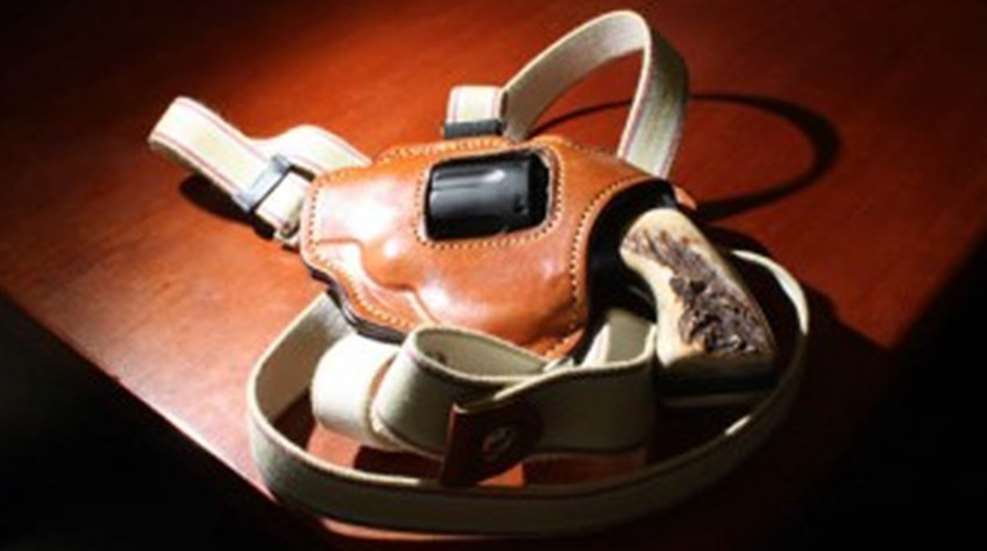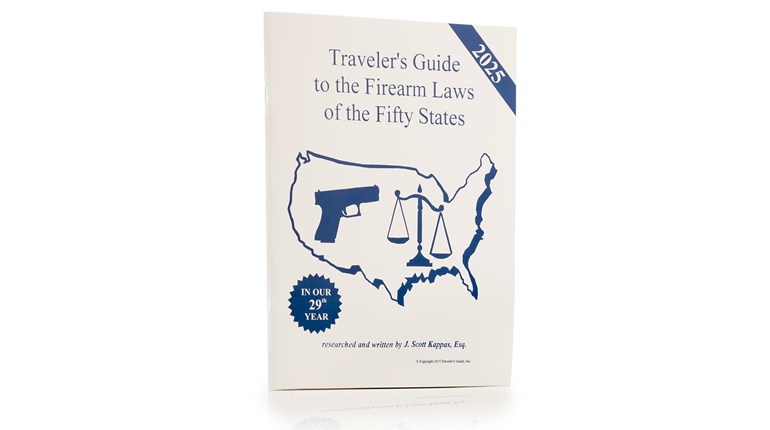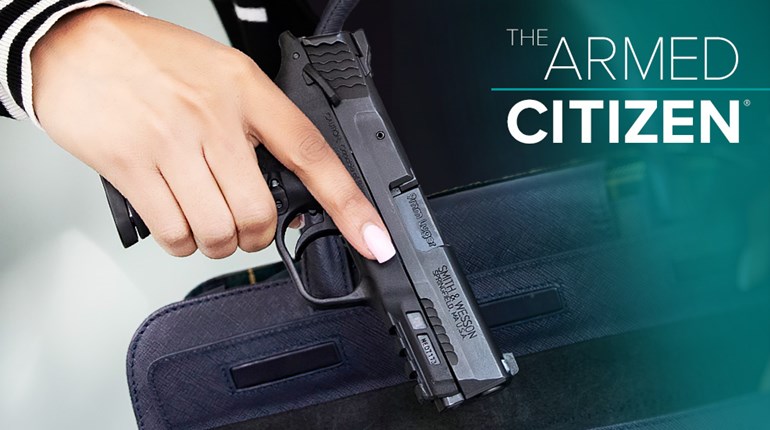
Some holster designs can be good choices with special attention and minor wear or positioning modifications. The modifications are not to the function of the holster, but rather how it is worn or positioned on the body—something as simple as moving the retention strap one belt loop forward, or adjusting the height of a holster.
Paddle holsters
Paddle holsters will afford the user the ability to remove the firearm from the location of wear during restroom breaks and transfers while the gun remains safely enclosed within the holster. However, special attention is required because the paddle component may have rough edges, resulting in skin abrasions. Even the placement can create pressure points and excessive friction. The holster may also become dislodged from repeated contact with the wheelchair back, arm rests or seating cushion.
Ankle holsters
Another popular concealment technique is the ankle holster. This allows the wearer the comfort of not having a bulky item on or around their waist, while affording them the protection of a firearm. With wheelchair users, the concealment principle of mobility comes into play. When a person wearing long pants sits, their pant legs ride up, potentially exposing their ankles and therefore exposing the concealed firearm strapped there. A simple modification would be to relocate the holster from the ankle to the calf. This would allow the wearer comfort and concealment coupled with peace of mind. Potential disadvantages of the ankle holster are, first, that the individual must lean forward extensively to reach the firearm while lifting the pant leg with one hand and accessing the firearm with the other. This complex movement requires the user to have the simultaneous use of both hands and sufficient strength of trunk musculature for stabilization. For some this may be of no consequence, but for others this could be a substantial barrier. Only you can determine if this or any method is compatible with your physical abilities.
Belly bands
A belly band holster can be worn in such a manner as to position the firearm in virtually any location on the trunk, but for wheelchair users there is only one recommended location that provides accessibility, mobility and concealment: one that places the firearm on the wearer’s side, whether it be the non-dominant (crossdraw) or dominant side. While the form-fitting nature and high level of adjustability make the belly band a favorite method of concealment, there are some limitations to consider.
The belly band holster moved to the front can cause issues with comfort and accessibility while seated in a wheelchair. This may be alleviated by moving the band higher on the trunk to place the firearm on the mid- to upper abdomen as opposed to the lower abdomen. Again, the appropriateness of this holster is based upon the individual’s need, and should not be used if it compromises safety, belts, straps or other necessary medical apparatus.
Shoulder rigs
Shoulder rigs are another favorite of concealed carry practitioners due to their comfort, accessibility and ease of concealment. While these characteristics cannot be denied, it must also be noted that drawing from a shoulder holster often results in the muzzle of the firearm pointing in an unsafe direction. Thus, even ranges that permit their clientele to practice drawing almost universally prohibit the use of shoulder holsters. Another concern specific to those using wheelchairs is that the gun and holster is mounted closely up under one arm—usually on the non-dominant side. This position may interfere with arm motions needed to maneuver the chair, or create an area of friction on the sensitive underside of the upper arm. With these substantial caveats in mind, there are two general designs of shoulder holsters: those that orient the firearm in a horizontal position and those that offer a more vertical orientation. The horizontal shoulder rig provides better accessibility and practicality over the vertical position, but with improved accessibility comes increased risk of exposing the firearm when performing day-to-day tasks.
A shoulder rig in the vertical position will naturally slim the profile of the gun to conform closer to the body when seated, but may restrict accessibility. To counter this issue, simply move the holster side belt retention strap forward one belt loop. This will bring the pistol’s grip forward, making it easier to reach and grasp while maintaining concealment.
Others
Some holsters are of limited use to people in wheelchairs. Small of the back and underwear holsters are not a good choice due to limitations on accessibility and comfort. Small of the back holsters require the wearer to lean forward to access the firearm, which may not be possible for many reasons including the use of a lap belt or chest strap because of compromised trunk mobility or stability. Deep concealment or underwear holsters are meant to be worn, as the name implies, under the pants to position the firearm in the groin area below the belt line. Concealing a firearm in this location may interfere with catheters and toileting so should be avoided.







































